Photos: Do’s and dont’s of popular yoga poses
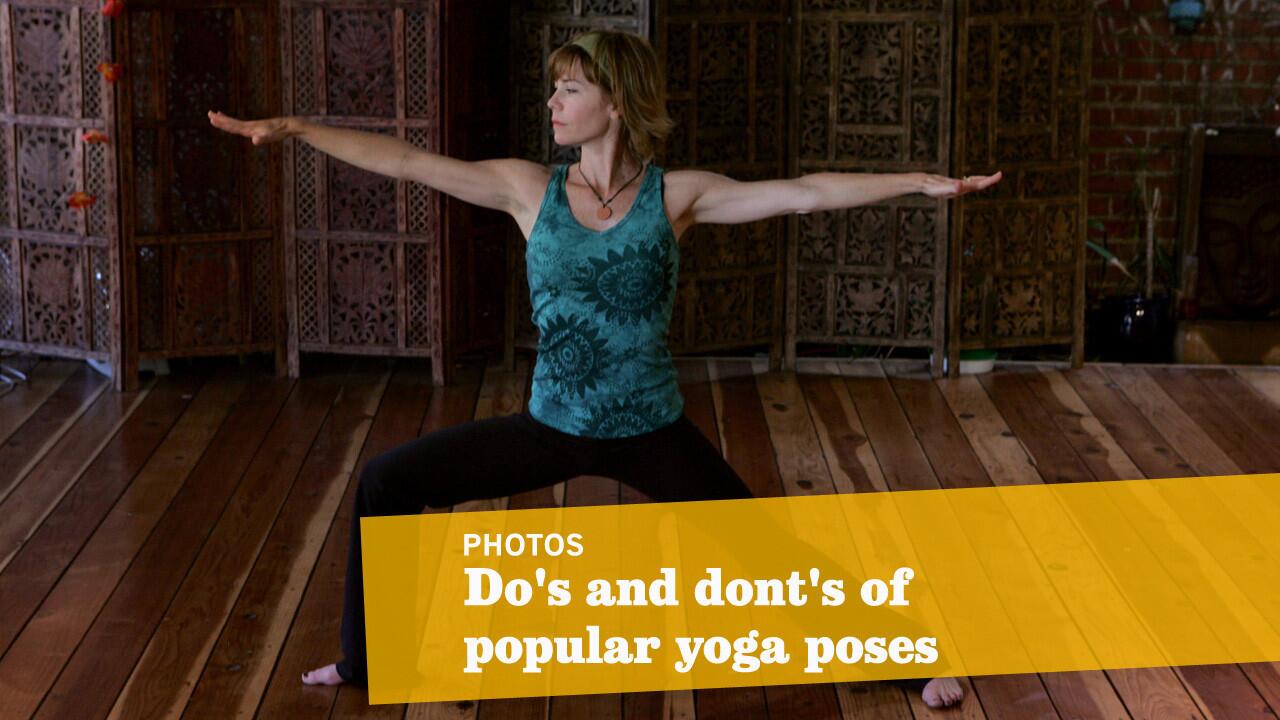
A few simple techniques can make the difference between a sore back (or other body part) and a strong, healthy one. Click through these do’s and don’ts of popular yoga positions.
Christine Burke is co-owner and director of Liberation Yoga, Los Angeles. Candace Morano is a New York-based yoga instructor and educational kinesiologist. By Jeannine Stein.
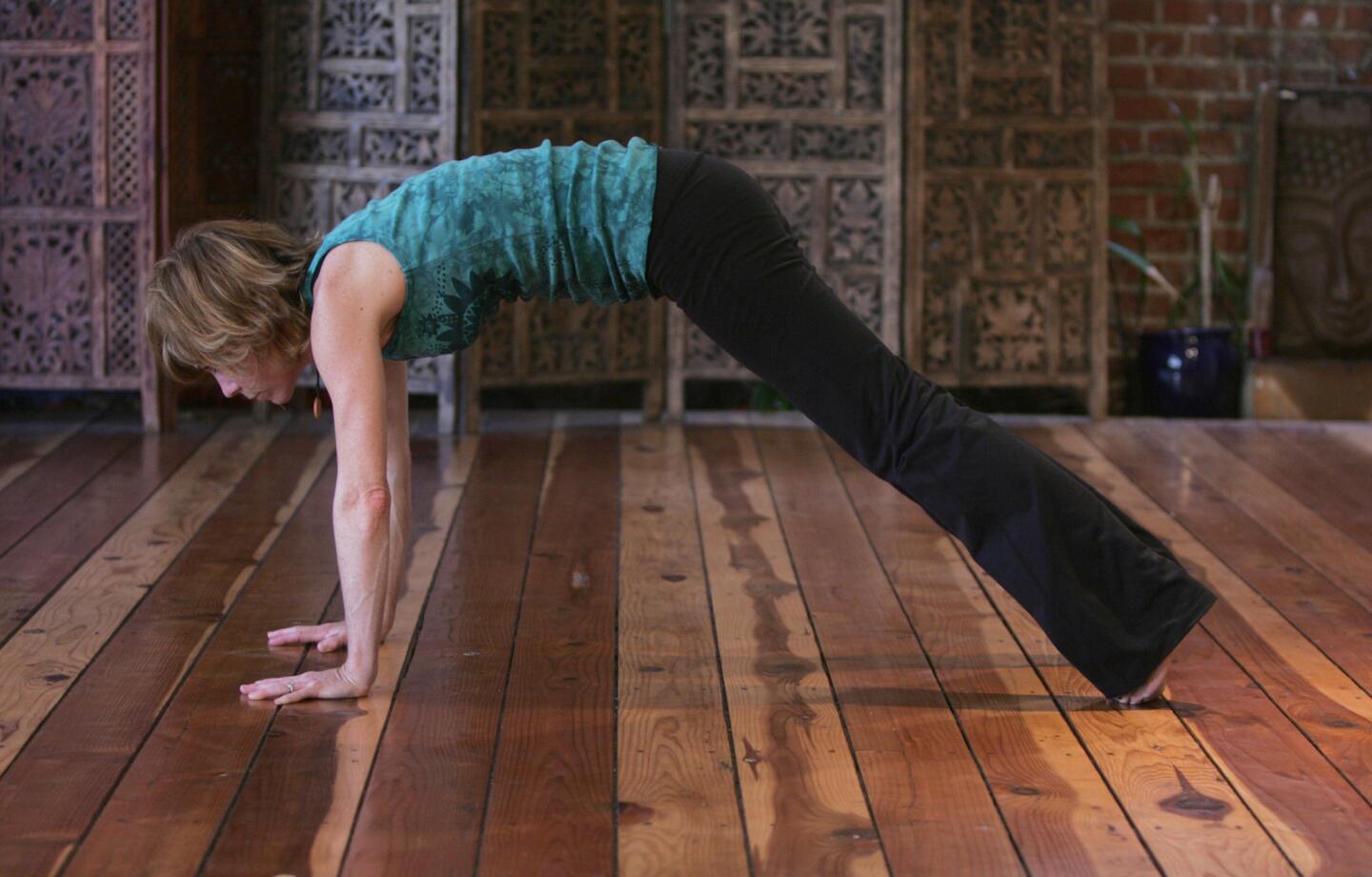
Facing the floor, the body is elevated and supported by the feet and arms, with the arms straight, as if starting a push-up.
Don’t: Lift your bum, especially if you’re not feeling that strong in the upper body. It puts extra pressure on the shoulders, elbows and the wrists. Most likely the shoulders will be ahead of the wrists, a position that doesnt use energy efficiently and is unnecessarily exhausting.
(Glenn Koenig / Los Angeles Times)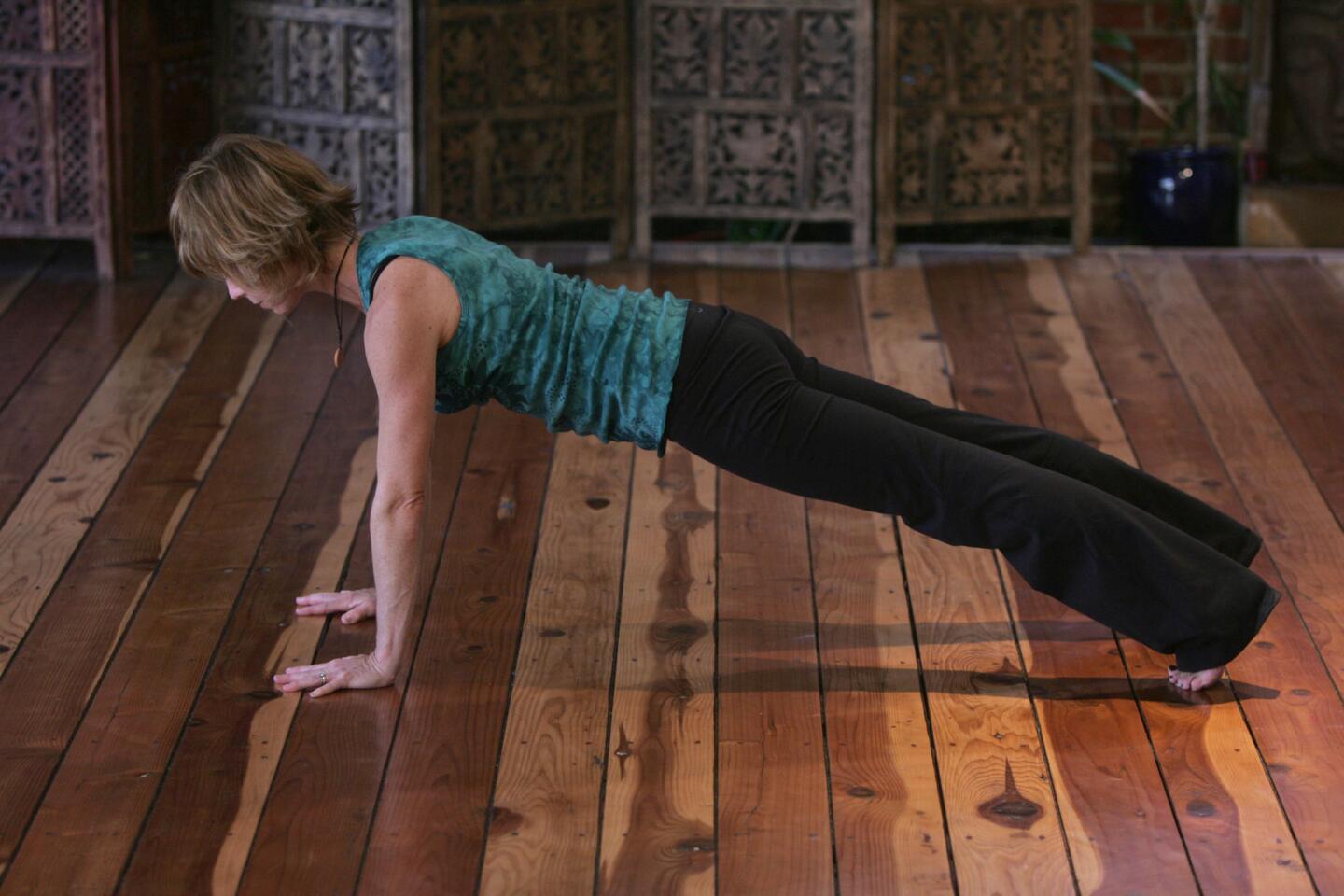
Do: Drop into a gentle diagonal from the shoulders to the heels. This employs the core muscles, taking pressure off the shoulders. It also stacks the elbows over the wrists and the shoulders over the elbows, so excess pressure isnt on any of the joints. There’s an even dispersion of energy. Because the plank is often used to connect one pose to another, the proper form will make transitions easier, without unnecessary shifting.
(Glenn Koenig / Los Angeles Times)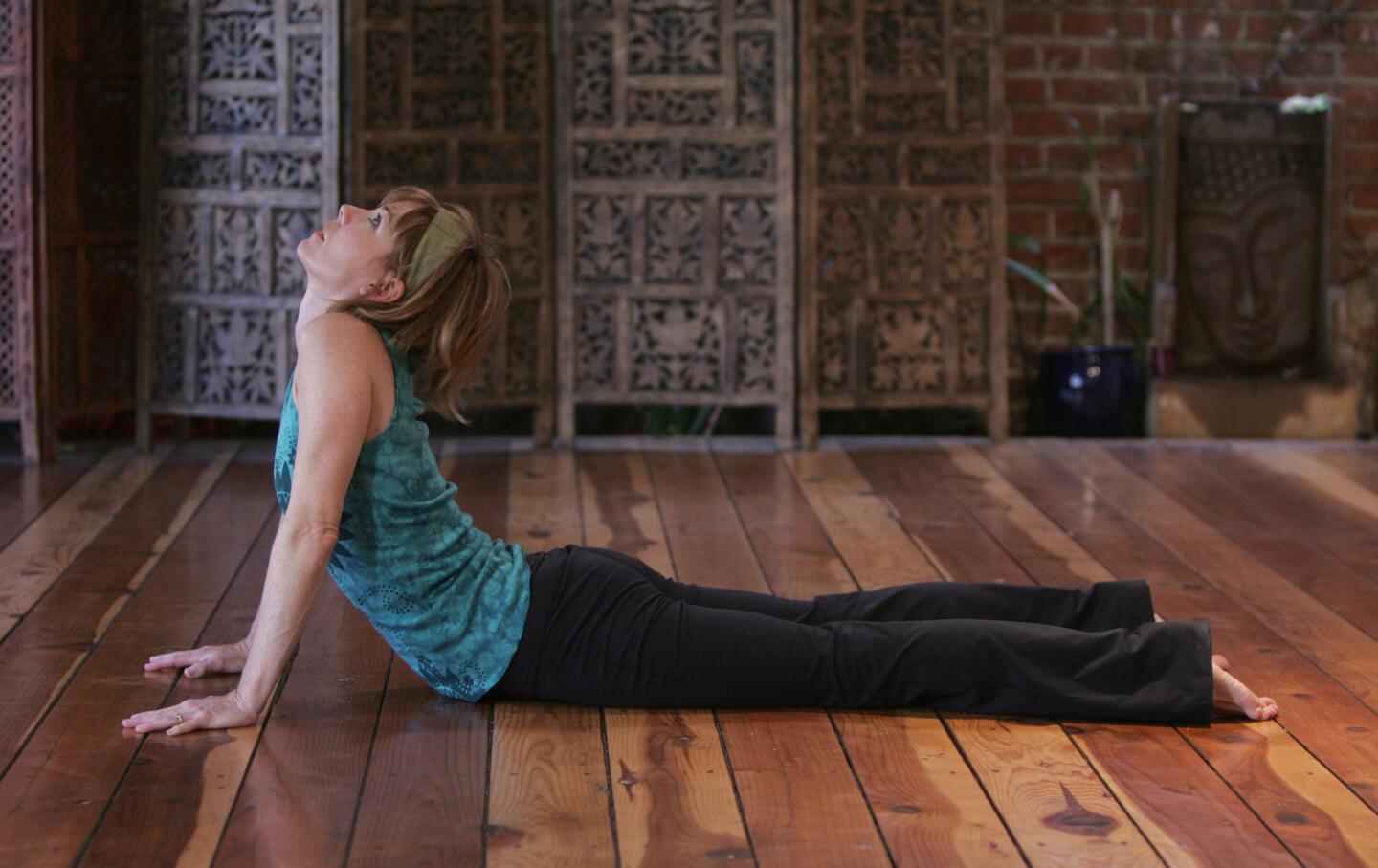
With the body lying on the floor, the legs are stretched back with thighs and feet touching the floor. Back is arched and chest is lifted, supported by the hands, which are underneath the shoulders.
Don’t: Get the chest up too high. Some people tend to push their arms straight, thinking they’ll naturally assume a deeper and more advanced version of this pose. But this makes the shoulders start to move up toward the ears, putting strain on the shoulders.
(Glenn Koenig / Los Angeles Times)Advertisement
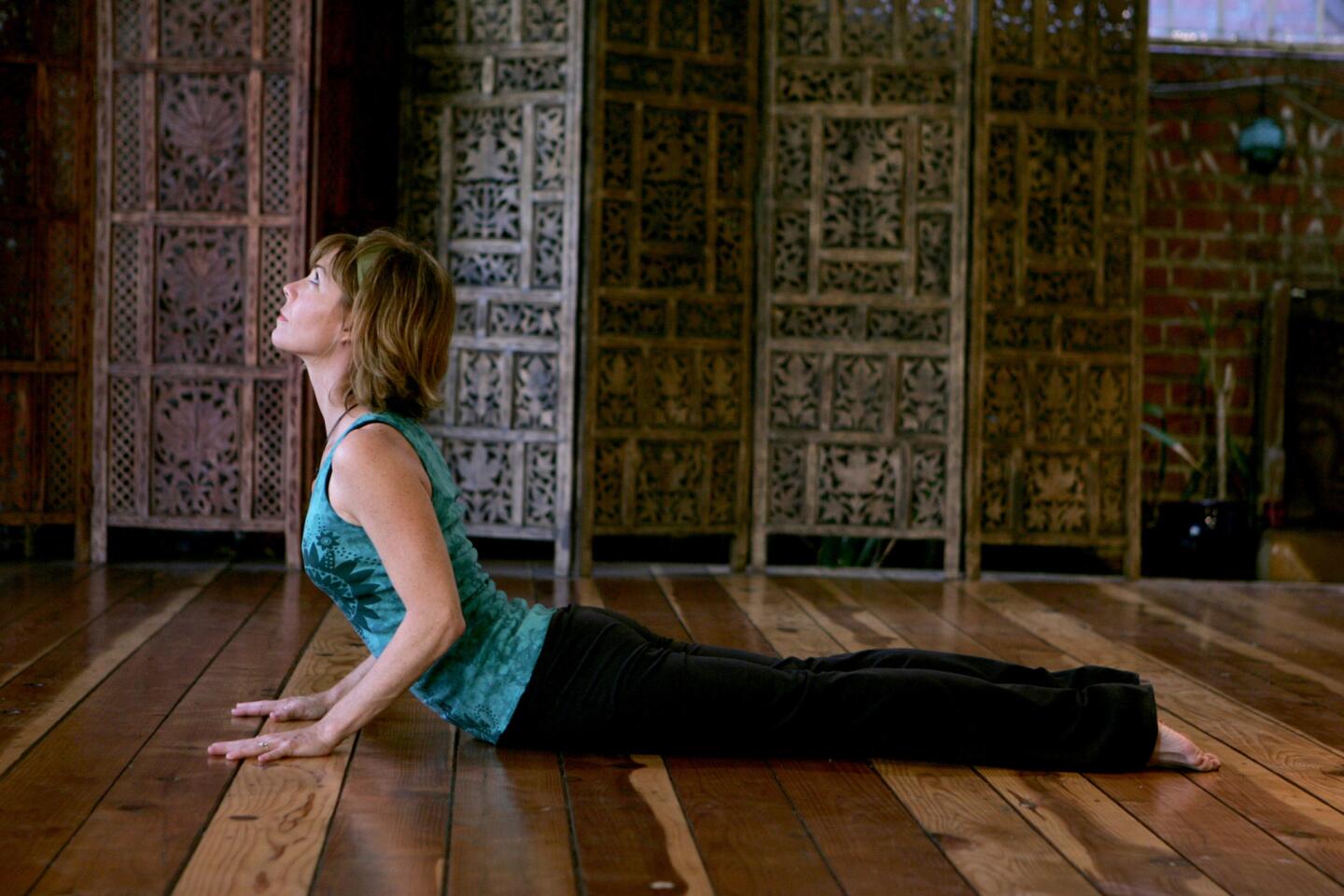
Do: Bend the elbows so that the back muscles are engaged. This is an upper back bend that’s meant to open the chest, heart and lungs -- and sometimes being a bit lower makes that easier. Bending the elbows helps the shoulder blades knit toward each other, and the shoulders don’t have to go up toward the ears.
(Glenn Koenig / Los Angeles Times)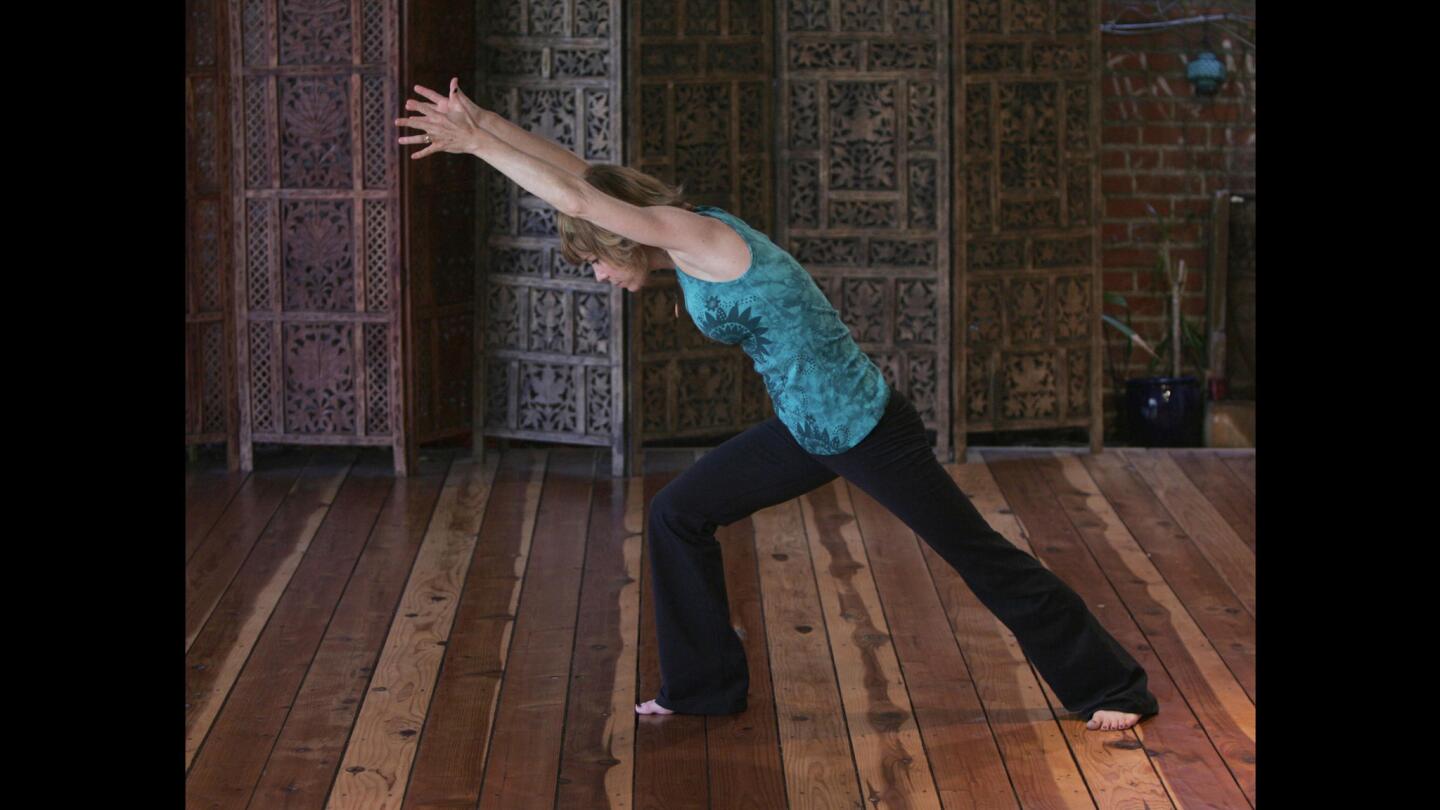
The body is in a modified lunge position, with the front leg bent and the back leg straight. Arms are straight and parallel, reaching upward, palms together.
Don’t: Push the knee too far over the ankle. When the knee goes too far forward, the knee joint is in a precarious position. This puts strain on the kneecap and the knee joint, possibly causing pain. It’s like building a structure you don’t want to have boards on an angle, you want to have a square foundation.
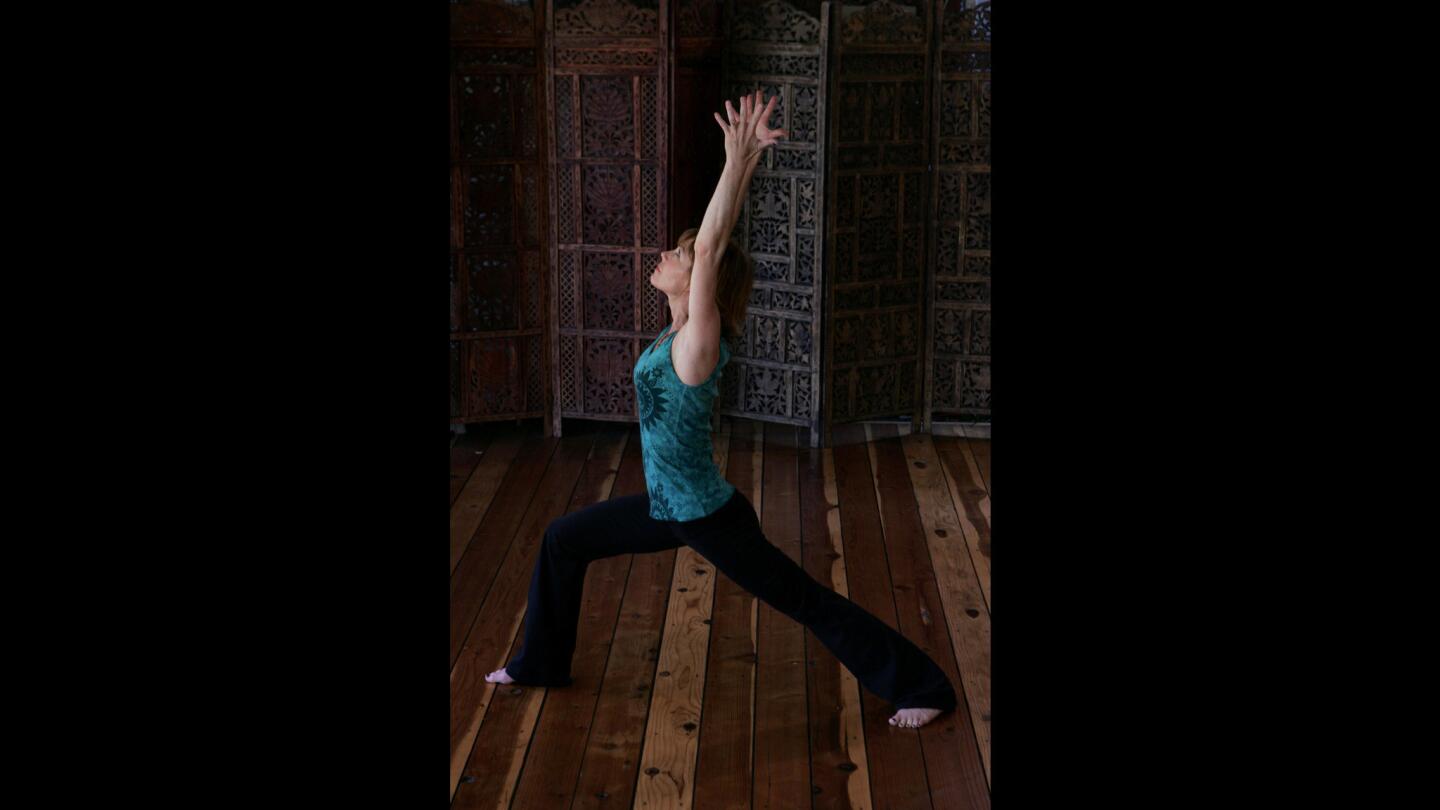
Do: Make sure the ankle is under the knee so that the leg is in a straight line perpendicular to the floor. To balance in this pose, push into the back leg. This is easier to do if the front knee is directly over the ankle. The back leg tends to get underused, and it can sometimes take you too far forward.
(Glenn Koenig / Los Angeles Times)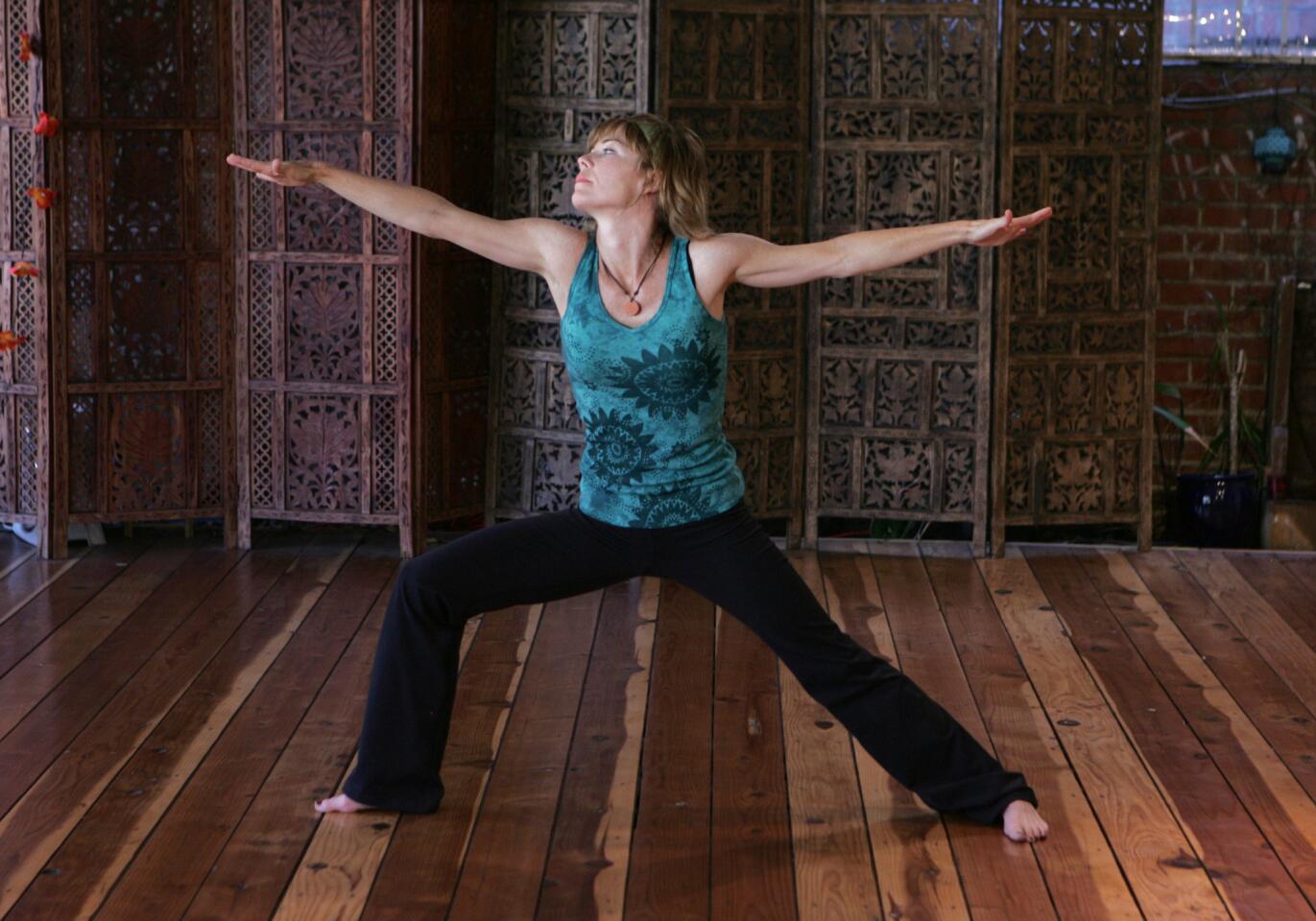
Legs are as in Warrior I, but the arms are outstretched at the sides, perpendicular to the sides of the body.
Don’t: Let the
Advertisement
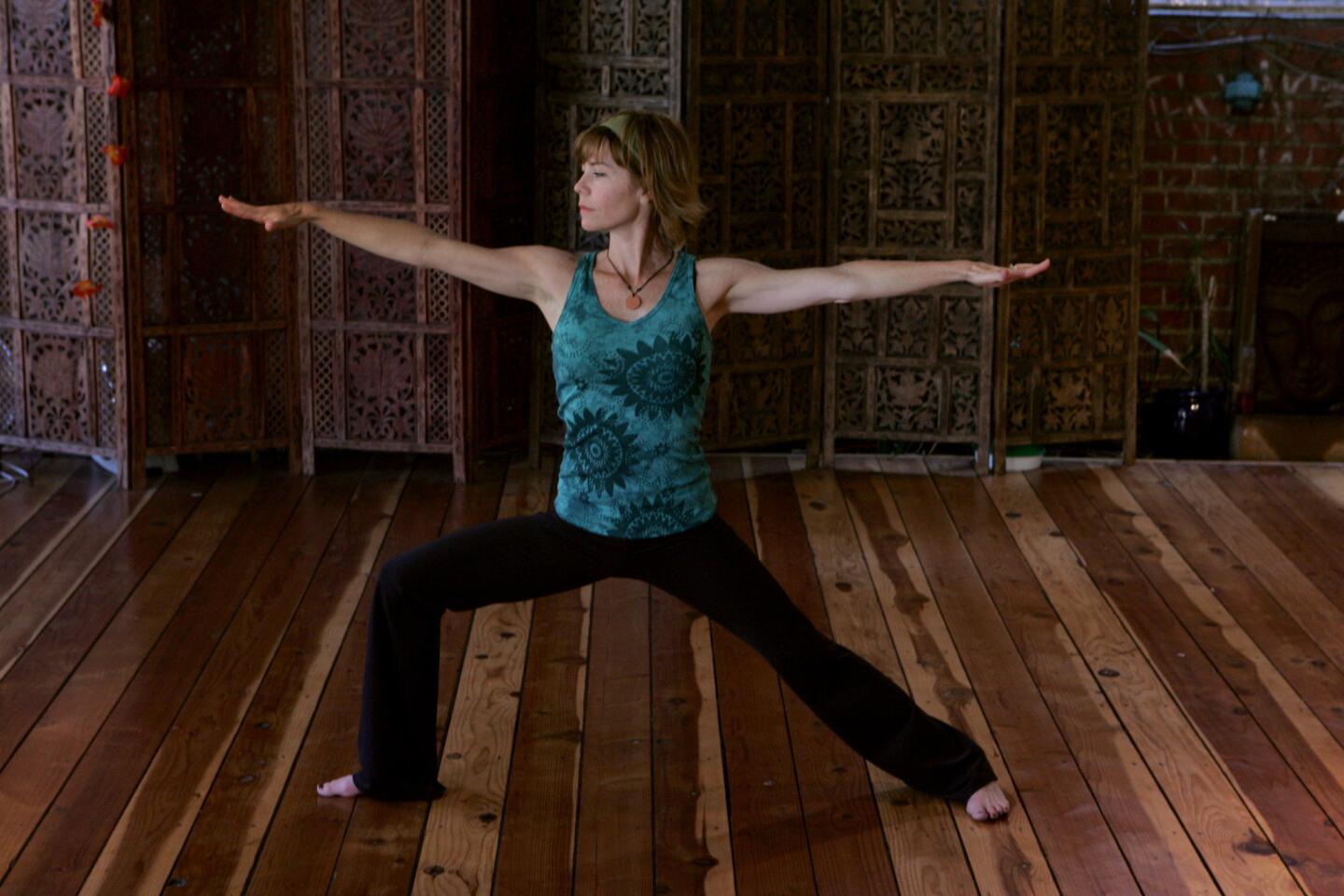
Do: Concentrate on using the rhomboid muscles (back muscles that connect the
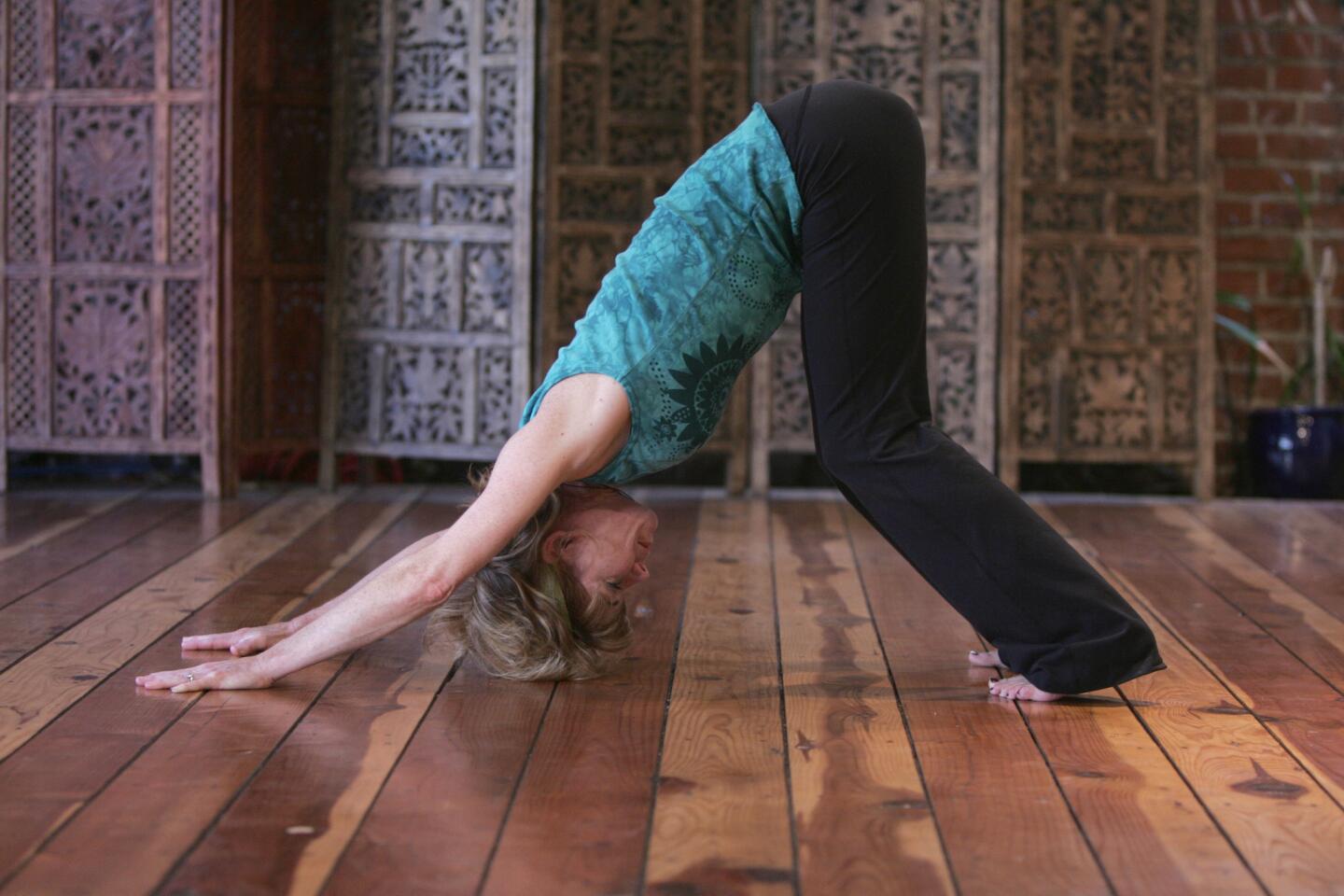
The body bends at the hips in an upside-down V, with arms straight, hands on the floor and heels pressing toward the floor. The head is aligned with the spine.
Don’t: Drop or hang into the
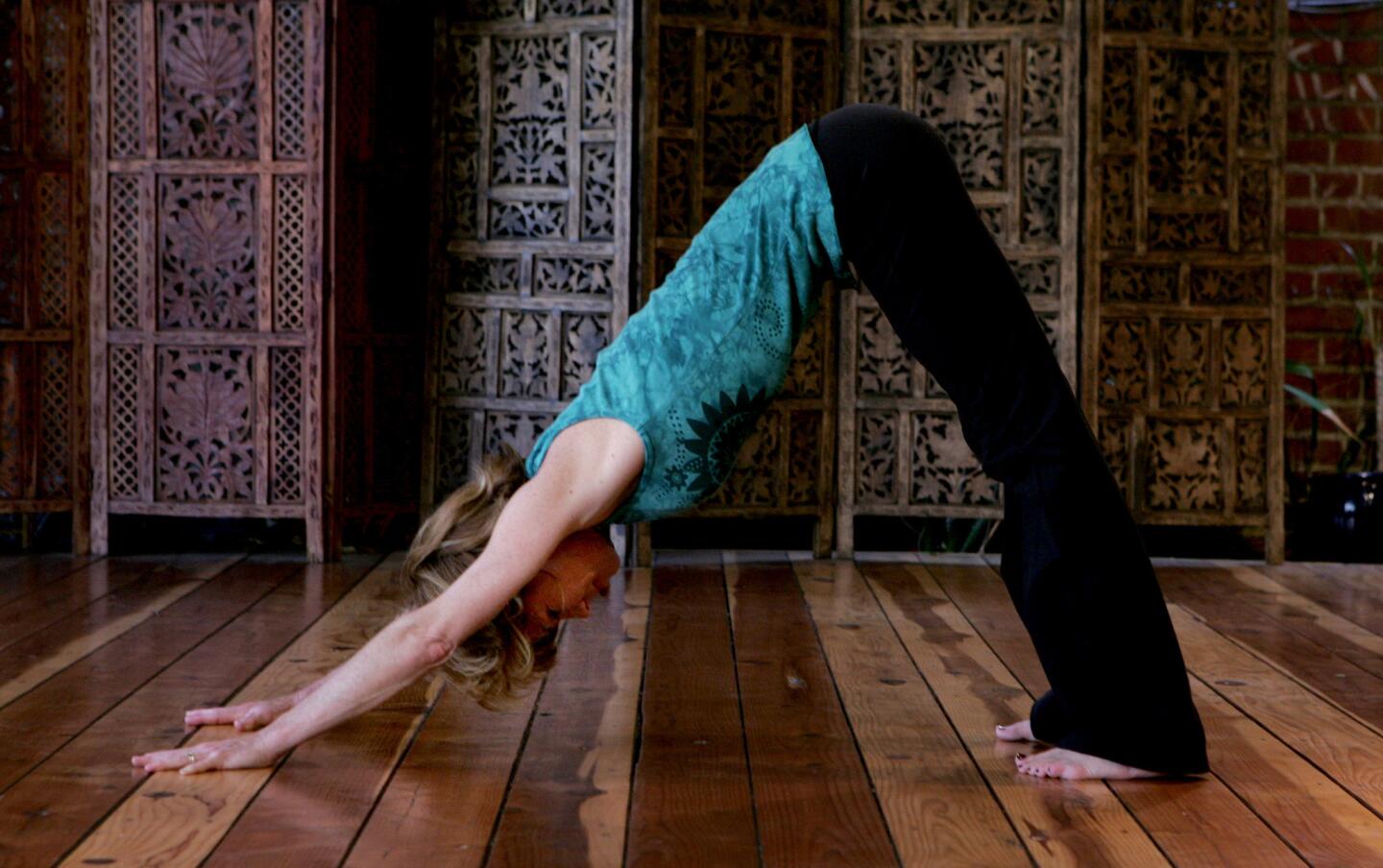
Do: Lift the
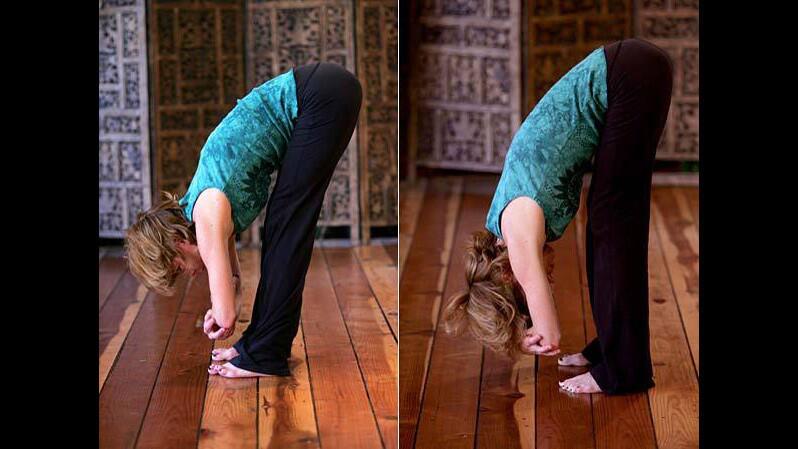
Feet are together as the torso and head bend forward toward the legs.
Don’t: Hyperextend the knees. That puts pressure on the hamstrings (the muscles at the back of the thigh) and the Achilles tendon. There’s a connection from the Achilles all the way up to the spine, so hypertextending almost puts a lock on the energy flow. This can lead to more tightness in the lower back and strain on the knee joints.
Do: Bend the knees a little bit. This helps draw the hips forward over the ankles. Sometimes that will make people feel as if they’re falling forward, but it also engages the muscles in the front of the thigh, in turn lengthening the front of the thigh muscle (the quadriceps) and then the hamstrings. This creates more of a balance.
(Glenn Koenig / Los Angeles Times)


